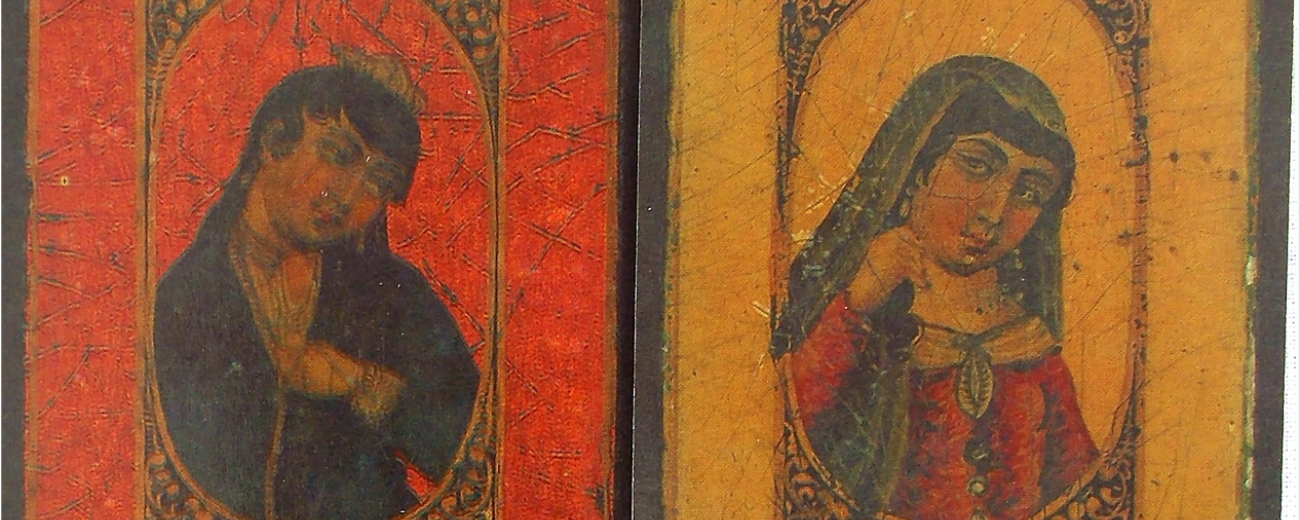
The Bibi-Lakkat Complex: Representations of Femininity and Female Responses to Vice in the Ludic Arts of Qajar Iran

Key information
- Date
- Time
-
7:00 pm
- Venue
- Russell Square: College Buildings
- Room
- Khalili Lecture Theatre (KLT)
- Event type
- Lecture
About this event
The poker-like As nas was one of the most popular card games in Qajar era Iran. Played primarily in coffeehouses (gavehkhaneh), where men could socialise within the urban environment of nineteenth-century towns and cities, games also took place closer to home within the otherwise chaste domestic environment.
This was much to the chagrin of wives and mothers, with outspoken Bibi Khanom Astarabadi describing even the most dignified of men as becoming “common and worse than animals” at the games table in her scathing Ma‘ayib al-rijal (Vices of Men) in 1894, a response to the chauvinistic advisory text Ta’dib al-nisvan (The Discipline of Women).
Each deck held in a man’s hand consisted of five suites of five identical cards, each bearing figurative motifs depicted under a lacquer finish. Two suites were illustrated with the female figures of the yellow-hued queen (bibi) and the vibrant crimson courtesan (lakkat), with the image of ‘woman’ therefore oscillating between the realms of the pedestal and the profane.
This dichotomy of imagery, where the queen and the harlot differed not only in colour and pose but also in the value of the card within the deck, doubtless reflected contemporary social attitudes towards women. Questions of female agency are implicit to gender roles both within and without Qajar game-culture: women can be seen to be quite literally ‘played with’ and exchanged between different men as expendable effigies on a games piece.
Although they may look on gambling nights scornfully - excluded from the social life of men - wives, mothers, nurses, and daughters were covert witnesses to male behaviour and provide the most thorough and wry written responses to men’s pastimes. Women’s unfavourable opinions can be seen to inform the period’s lampooning of vice and male sociability in satirical cartoons found in publications such as Molla Nasraddin.
This paper aims to both trace and uncover how women’s attitudes towards men, and vice versa, were as much of a battle of the sexes as the competitive metaphor of a game of As nas can provide.
The lecture will be chaired by Professor Scott Redford.
About the speaker
Dr Natasha Morris BA, MA, PhD (Courtauld, University of London) is Lecturer in Islamic Arts and a convenor of the Islamic Art module of the Postgraduate Diploma in Asian Art at SOAS.
She was previously Myojin-Nadar Project Curator Middle East Art at the British Museum, and co-authored Reflections: art of the Middle East and North Africa (British Museum, 2020) and Honar: The Afkhami Collection of Modern and Contemporary Iranian Art (Phaidon, 2017).
She has written extensively on the art of the Middle East for publications including The Oxford Art Journal, The Art Bulletin, Time Out, and The Guardian as well as authoring several exhibition catalogues.
Contact
Email: rw51@soas.ac.uk.
Image: Playing Card, second half 19th century, Iran, Paper, paint, lacquer, and gold,
Dimensions: H. 2 1/4 in. (5.7 cm) W. 1 9/16 in. (4 cm),
1980.229.13. Credit: Metropolitan Museum of Art, New York


